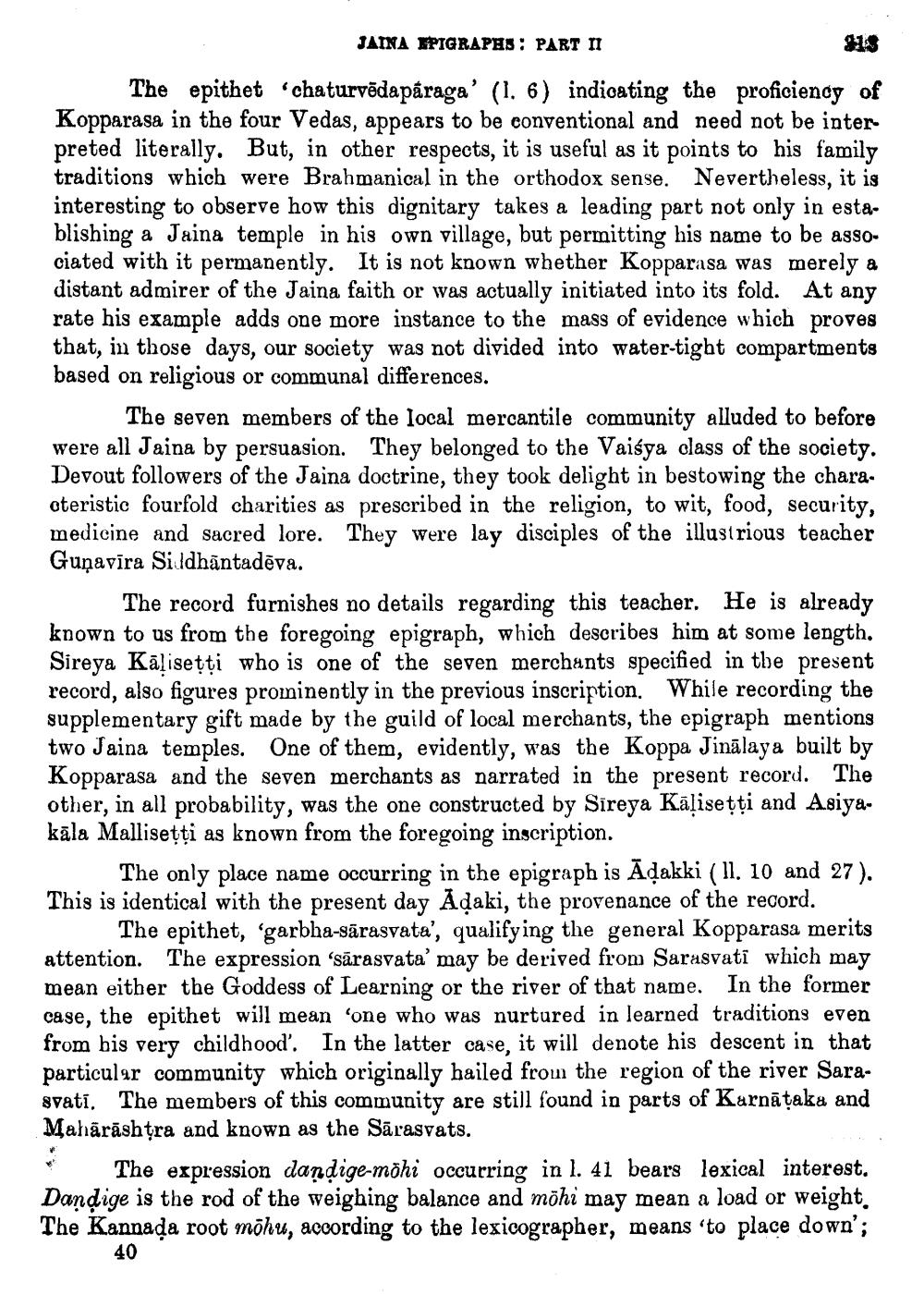________________
JAINA WPIGRAPHS: PART II
313 The epithet chaturvēda pāraga' (1. 6) indicating the proficiency of Kopparasa in the four Vedas, appears to be conventional and need not be interpreted literally. But, in other respects, it is useful as it points to his family traditions which were Brahmanical in the orthodox sense. Nevertheless, it is interesting to observe how this dignitary takes a leading part not only in establishing a Jaina temple in his own village, but permitting his name to be associated with it permanently. It is not known whether Kopparasa was merely a distant admirer of the Jaina faith or was actually initiated into its fold. At any rate his example adds one more instance to the mass of evidence which proves that, in those days, our society was not divided into water-tight compartments based on religious or communal differences.
The seven members of the local mercantile community alluded to before were all Jaina by persuasion. They belonged to the Vaisya class of the society. Devout followers of the Jaina doctrine, they took delight in bestowing the chara. oteristic fourfold charities as prescribed in the religion, to wit, food, security, medicine and sacred lore. They were lay disciples of the illustrious teacher Gunavīra Siddhāntadēva.
The record furnishes no details regarding this teacher. He is already known to us from the foregoing epigraph, which describes him at some length. Sireya Kālisetti who is one of the seven merchants specified in the present record, also figures prominently in the previous inscription. While recording the supplementary gift made by the guild of local merchants, the epigraph mentions two Jaina temples. One of them, evidently, was the Koppa Jinālaya built by Kopparasa and the seven merchants as narrated in the present recor other, in all probability, was the one constructed by Sireya Kāļisetti and Asiya. kāla Mallisetti as known from the foregoing inscription.
The only place name occurring in the epigraph is Ādakki ( 11. 10 and 27). This is identical with the present day Adaki, the provenance of the record.
The epithet, 'garbha-sārasvata', qualifying the general Kopparasa merits attention. The expression ‘sārasvata' may be derived from Sarasvati which may mean either the Goddess of Learning or the river of that name. In the former case, the epithet will mean 'one who was nurtured in learned traditions even from bis very childhood'. In the latter case, it will denote his descent in that particular community which originally hailed from the region of the river Sarasvati. The members of this community are still found in parts of Kurnāțaka and Mahārāshtra and known as the Sārasvats. * The expression dandige-möhi occurring in l. 41 bears lexical interest. Dandige is the rod of the weighing balance and möhi may mean a load or weight. The Kannada root mohu, according to the lexicographer, means 'to place down';
40




